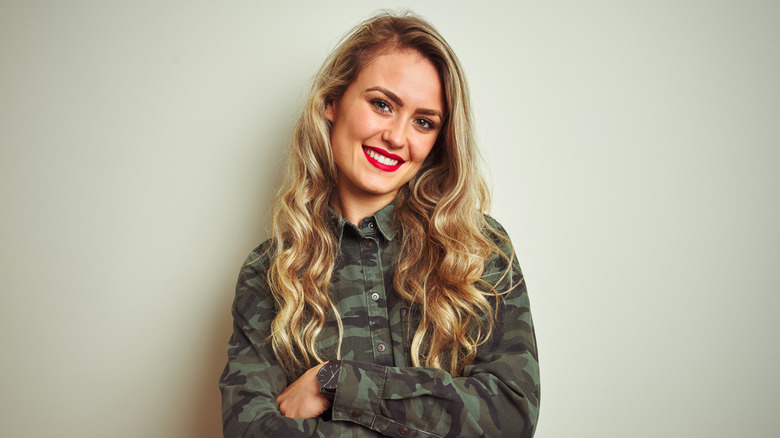Your passport stays with you for up to 10 years — assuming you don’t lose it while traveling — which is why getting a good photo can feel critical. However, if you were planning to wear your favorite white top when getting your picture taken, you might be out of luck.
One content creator named Stef (@sideofstef) shared her experience after donning a white sweater to get her passport photos taken by a professional photographer. In a TikTok clip, which has been viewed over 1 million times on the platform, Stef warns others to not wear white for the shoot — otherwise, they might be forced to change into a different shirt. In her case, she had to borrow the sweatshirt off her boyfriend’s back, who was also getting his passport pics taken. The result: “mortifying” photos of the two in the same matching top.
Others have been even less lucky. In a travel thread on Reddit, a user named amerikanss explained that their passport photo was rejected after they chose to wear a white shirt. As a result, they had to retake their pictures, causing a delay in their passport renewal and potentially preventing them from taking the trip to France they’d already planned.
Why can’t you wear white in passport photos?
@sideofstef
TSA TWINS!!!!
♬ Monkeys Spinning Monkeys – Kevin MacLeod & Kevin The Monkey
The U.S. Department of State doesn’t explicitly say in its passport photo guidelines that white tops are a no-go. In fact, the government’s website even shows photos of models wearing white in its examples of acceptable images. Nevertheless, you could still run into trouble if you try to submit a photo of yourself in a white T-shirt or sweater.
According to the Redditor, the reason given for their rejected picture was that their white shirt blended in with the photo’s required white background. That might also explain why the TikTok creator was instructed by her photographer to wear her boyfriend’s green sweatshirt.
One way around the unofficial rule might be to wear a light-colored top made of a highly textured fabric, such as a fuzzy sweater or lacy blouse. Otherwise, stick to dark garments that easily pop against the white backdrop.
Busy prints should also be avoided in passport pictures

Given how crucial it is to not blend in with the background in your passport photo, you might consider a top with a busy print or design. However, plain garments are likely to be your best bet. This is another unofficial rule that you won’t find listed in the U.S. Department of State’s guidelines, but it’s worth following if you want to sidestep delays and picture retakes.
Bold prints and wild designs can be distracting and might compete with your facial features — not the result you want for such an important form of identification. Plus, the zany prints that might be trendy when you take your pic could appear outdated after only a few seasons. Timeless, simple tops often leave the best impression and ensure your face remains the focus of the image.
Similarly, avoid camouflage attire, whether worn casually or as part of a uniform. This is a strict U.S. passport photo requirement, and failing to comply will likely lead to your application getting rejected.

